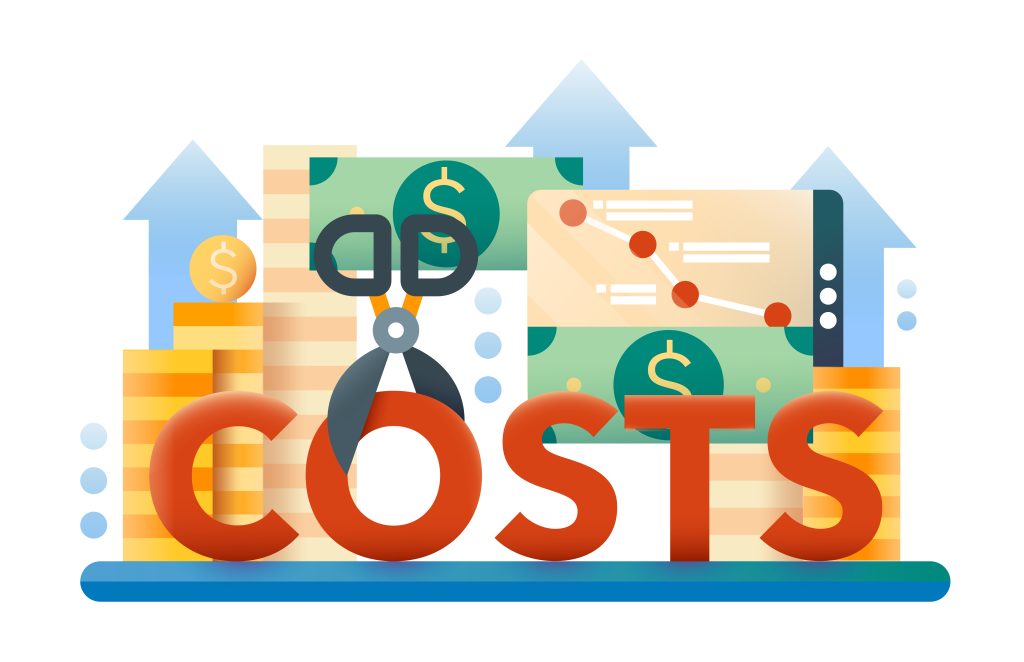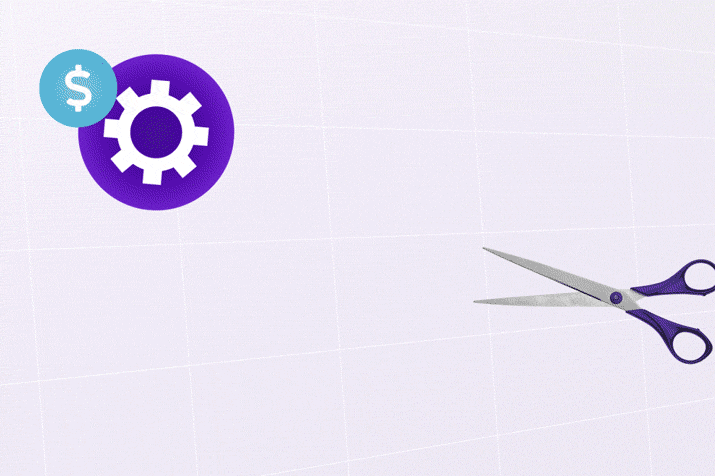Recently updated on May 21st, 2024 at 03:55 pm
Maintaining your website is the key to keeping it running like a well-oiled machine. You want your most important digital asset to work hard for you. However, most businesses don’t consider the investment that’s needed after their website is built. Website maintenance cost easily causes one of the biggest headaches for business owners, as ignoring additional costs often leads to customer complaints of slow page loads, the dreaded “screen of death” and other common website issues.
Understanding what website maintenance involves can help you better plan and manage your budget. Depending on the scale and functions of your site, there are several aspects that need to be checked regularly, and most of the maintenance tasks require highly technical skills.
But think about your website in the same way as your car. You drop a lot of money for routine tune-ups, but this cost outweighs the benefits as it helps you avoid the even higher expenses (not to mention the hassle) of unexpected repairs!
Likewise, keeping a website in top condition can be a costly exercise. So we’ve rounded up some ways to help you reduce common website maintenance costs.
Essential Website Maintenance Services (What Am I Paying For?)
Before we proceed, let’s take a moment to understand what you’re paying for when it comes to website maintenance. Average website maintenance costs to keep a site in top condition can be quite high, so it’s important to recognise the value of the services you’re investing in. Here are some typical components included in web maintenance packages:
- Security Updates: Regularly installing security patches and updates to protect against cyber threats.
- Backup Management: Creating and managing backups of website data to prevent data loss in the case of emergencies.
- Performance Optimisation: Optimising website speed and performance through techniques like caching and code optimisation.
- Content Management: Updating and managing website content, including text, images, and videos.
- Bug Fixes: Identifying and fixing any technical issues or bugs that may arise on the website.
- Software Updates: Keeping website software, plugins, and applications up-to-date to ensure compatibility and website security.
- Monitoring and Reporting: Monitoring website performance, uptime, and security status, and providing regular reports on website health.
- SEO Maintenance: Implementing and maintaining search engine optimisation (SEO) strategies to improve website visibility and ranking.
- Mobile Responsiveness: Ensuring that the website is optimised for mobile devices and provides a seamless user experience across all screen sizes.
6 ways to reduce website maintenance costs

Now that you’re familiar with what website maintenance covers, let’s delve into some strategies to help you reduce website maintenance service costs. By implementing these tactics, you can optimise your spending while still ensuring that your corporate website remains in top condition.
1. Keep it simple
Simple, clean designs tend to be less expensive to maintain than complex, feature-rich websites. When considering the design of your website, it’s essential to prioritise simplicity and functionality. Complex designs with excessive features and functionalities not only increase initial development costs but also require more time and resources to maintain and update over time.
Start by identifying the core features and functionalities that are essential for achieving your website’s objectives. Focus on creating a streamlined, user-friendly design that prioritises usability and accessibility. Avoid unnecessary bells and whistles that may add complexity to regular content updates, ballooning monthly maintenance costs without providing much value to your users.
By keeping your web design simple and focused, you can reduce maintenance costs in several ways:
Lower Development Costs
Simplifying your website design reduces the time and resources required for initial development, resulting in lower upfront costs for site owners.
Ease of Maintenance
Simple designs are easier to maintain and update, as there are fewer components and moving parts to manage. This can save time and effort in ongoing maintenance tasks such as content updates, software updates, and troubleshooting.
Faster Loading Times
Complex designs with excessive graphics, animations, and scripts create large websites with slow loading times. This leads to a poor user experience and higher bounce rates. By prioritising simplicity, you can optimise loading times and ensure a smooth browsing experience for your visitors.
Reduced Risk of Errors
Complex designs increase the risk of technical issues and compatibility problems, which may require costly fixes and troubleshooting. Simplifying your website design minimises the risk of errors and ensures smoother operation over time.
2. Use open-source software
Consider using open-source software for your website, such as WordPress, as it’s often free and has a large community of developers and tech support who can help with website updates and maintenance.
Here are some popular open-source options for website development:
Content Management Systems (CMS):
WordPress: A user-friendly platform that allows you to easily create and manage content for your website, even with no coding experience. This website builder is great for blogs, portfolios, and basic business websites.
Drupal: A powerful and scalable CMS suitable for complex websites with a high volume of content. Requires some technical knowledge to set up and manage.
Joomla: Another user-friendly CMS option offering a good balance between ease of use and features.
eCommerce Platforms:
Magento: A robust open-source platform for building large and complex online stores. Requires significant web development expertise to set up and maintain.
PrestaShop: A user-friendly option for creating smaller to medium-sized online stores. Offers ecommerce system support and a variety of features and extensions for customisation.
Static Site Generators:
Jekyll: A simple and lightweight tool for generating static pages of websites from content written in Markdown. Great for creating blogs or simple portfolio websites.
Hugo: Another popular static site generator with a focus on speed and performance. Offers a variety of themes and layouts for customisation.
3. Choose cost-effective web hosting
Choose a website hosting provider that offers reliable service at an affordable price. For example, using cloud-based hosting services over traditional dedicated servers can lower monthly costs significantly. Additionally, consider bundling your domain and hosting services with the same provider to streamline management and potentially further save on overall costs.
The type of hosting you choose will depend on your website’s traffic, complexity, and budget. Here’s a quick guide to the most common web hosting options:
Shared Hosting:
Offers a balance between shared hosting and dedicated servers. You get a dedicated portion of server resources, providing more control and scalability than shared hosting. Consider the following options:
Virtual Private Server (VPS) Hosting:
Cloud Hosting:
Leverages the power of cloud computing for on-demand scalability and reliability. A good option for websites with fluctuating traffic or those expecting growth. Consider the following options:
Dedicated Hosting:
Explore these options thoroughly so you can select the right web hosting plan later.
4. Consistency (and prevention) is key
The more regular you do your maintenance tasks – such as theme and plugin updates and malware scans – the less likely you’ll encounter problems. Staying consistent keeps you on top of issues before they happen.
By consistently performing maintenance tasks, you can:
- Security Updates: Regularly installing security patches and updates to protect against cyber threats.
- Backup Management: Creating and managing backups of website data to prevent data loss in the case of emergencies.
- Performance Optimisation: Optimising website speed and performance through techniques like caching and code optimisation.
- Content Management: Updating and managing website content, including text, images, and videos.
5. Regular backups
Regularly backing up your website will help you recover quickly from any unexpected issues and reduce the total cost of repairs. Regular website backups act as a safety net, protecting you from a variety of threats:
- Hacking and Malware Attacks: Hackers may try to deface your website, inject malware, or steal data. A recent site backup allows you to restore your website to a clean, pre-attack state.
- Accidental Data Loss: Human error happens. Someone might accidentally delete important content, files, or your entire database. With a backup, you can recover the lost data quickly.
- Technical Issues: Hardware failures, software bugs, or server problems can sometimes corrupt your website data. Backups provide a way to restore your website and minimise downtime.
6. Hire a professional
Big budgets, big sites? Don’t skimp on maintenance! Self-fixing your website might save a buck now, but one mistake can mean big problems (and bigger bills) later. Especially if you’re managing multiple websites, pro maintenance = peace of mind, saved time, and saved money.
The best approach for website maintenance depends on your technical skills, budget, and website’s complexity. Here’s a quick guide to help you decide:
Self-maintenance
A good option for those who are comfortable with basic website management tasks and have the time to dedicate to regular maintenance.
Hire a Freelancer
Consider this option if you have a specific task or project in mind and are looking for a cost-effective solution.
Hire a Website Maintenance Agency
The ideal choice for businesses that lack the in-house expertise or require comprehensive website support and ongoing security monitoring.
Ultimately, the most important thing is to choose an option that ensures your website is consistently maintained and performing at its best. But if you want to keep the average cost of maintenance down, you’ll have to think long-term, choosing the option that suits your web applications both now – and in the future.
Should I hire a Website Maintenance Agency?

Many business owners think that hiring a website maintenance agency requires a large budget, blowing out their monthly website maintenance cost completely.
That’s not necessarily true.
Often smaller website maintenance agencies have lower overhead costs, which means they can offer flexible and affordable arrangements. In addition, letting professionals do the job minimises errors that may lead to more expensive website repairs.
Self-maintenance can be a cost-effective option if you have a small business website with relatively simple features and maintenance needs. However, if your website is more complex, it may be more efficient to hire a web maintenance agency, as they will have a team of developers and designers available to work on the different aspects of your website. Additionally, an agency may be able to provide other services such as content creation, graphic design and digital marketing.
What to Look for in a Website Maintenance Agency
By carefully evaluating these factors, you can choose a website maintenance agency that not only meets your budget but also delivers quality service and support to keep your website running smoothly.
Experience and Expertise
Look for an agency with a track record of success in website maintenance. Check their portfolio and client testimonials to gauge their experience and expertise in handling projects similar to yours.
Range of Services
Consider what services the agency offers beyond basic maintenance. A comprehensive agency may provide additional services such as content creation, graphic design, and digital marketing, offering you a one-stop solution for all your website needs.
Flexibility and Customisation
Every website has unique requirements, so it's essential to find an agency that can tailor their services to meet your specific needs. Look for flexibility in terms of service packages and pricing to ensure you get the most value for your investment.
Communication and Support
Effective communication is key to a successful partnership. Choose an agency that prioritises clear communication and provides responsive support whenever you need assistance or have questions about your website.
Affordability
While cost is an important factor, it shouldn't be the sole determining factor. Consider the overall value offered by the agency in terms of services, expertise, and support, rather than focusing solely on the lowest price.
When considering hiring a website maintenance agency in Australia, it’s important to choose the right partner for your needs. Here are some key factors to consider:
Ready to Roll? Begin Your Website Maintenance Plan Today
Key to a successful online brand presence is a highly functional website that provides a seamless user experience. Overall, website maintenance is an ongoing process that requires investment to ensure the website continues to perform well and meet users’ needs. With careful planning and the right maintenance provider, managing your website upkeep can be easier on the pocket (and less of a headache!).
Spark provides all the services you need to have a smooth, functional, and user-friendly website. Our friendly experts can help you assess your specific needs and budget to determine the best option for you, including selecting the right maintenance plan.






